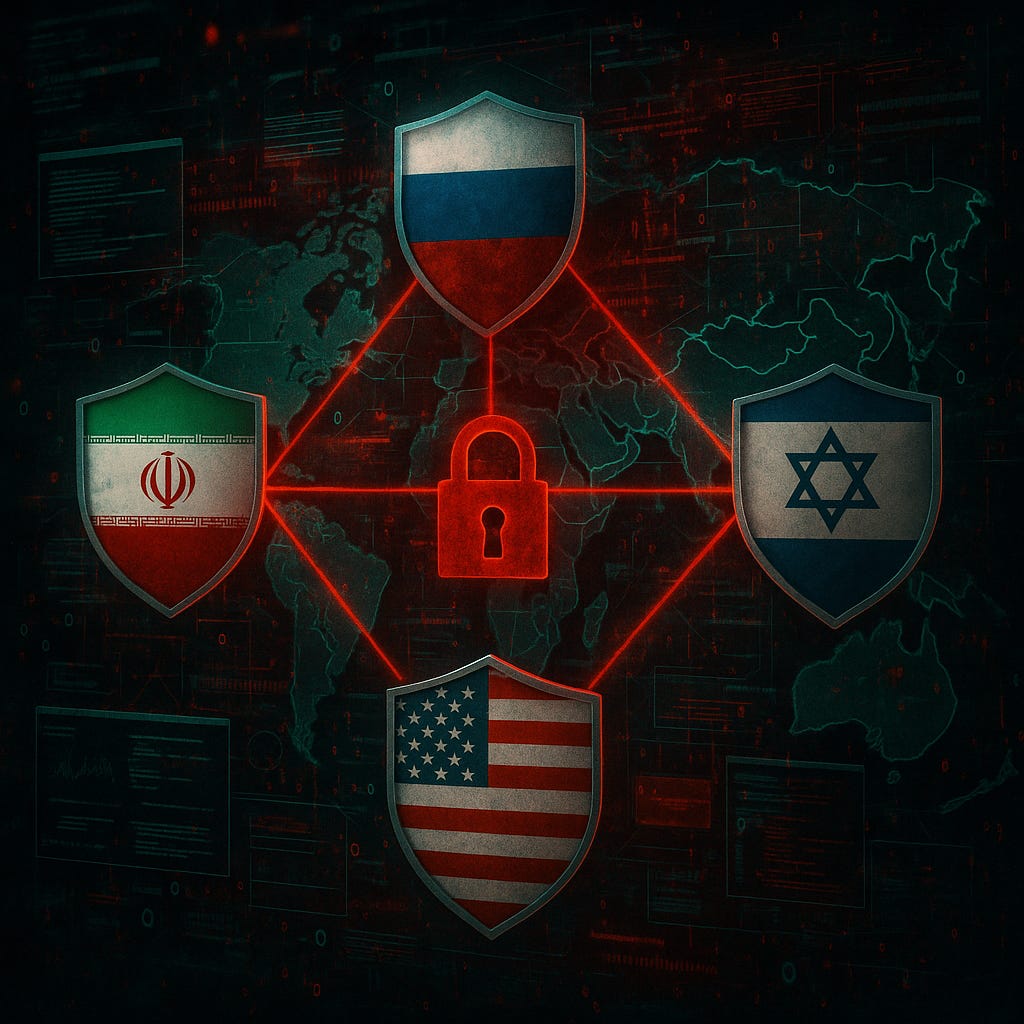The Retaliation Window
How Iran (and Russia) Might Target Western Business Post-Fordow
ChatGPT: National Cyber Retaliation Possibilities
What happens when a strike silences centrifuges but accelerates keyboards? History tells us this story. When kinetic operations eliminate nuclear capabilities, adversaries pivot to asymmetric digital warfare. US and Israeli companies now sit squarely in the cyber crosshairs.
Escalation with Code Instead of Missiles
The US kinetic strike on Iran's Fordow enrichment plant creates questions about retaliation doctrine. Historical precedent reveals Iran's preference for cyber responses to physical provocations. 2012’s Operation Ababil and Shamoon wiper attack, and 2014’s attack on Sands, demonstrated this pattern. Russia's possible concurrent involvement in such campaigns amplifies both reach and destruction potential.
Intelligence professionals recognize that adversary keyboards often respond faster than missile batteries. For executives, the core question isn't "Will there be cyber retaliation?" but rather "Where, when, and how severe?"
Understanding Adversary Archetypes
Recorded Future's threat intelligence reveals distinct operational signatures across Iranian and Russian threat actors:
Iranian APT groups (APT34, APT39, APT35) demonstrate sophisticated credential harvesting campaigns targeting government contractors and energy infrastructure. Their methodology emphasizes long dwell-time persistence and intelligence collection over immediate destruction.
Handala Hack Team
Caption: Handala Hack Team Summary courtesy of Recorded Future AI Insights.
Russian-aligned actors (APT44, KillNet, BlueDelta) favor destructive operations, including wipers, DDoS campaigns, and infrastructure targeting. These groups excel at civil disruption and psychological operations.
Fusion campaigns represent the emerging threat model where diversionary attacks mask primary objectives. DDoS serves as operational noise while parallel intrusions establish persistent access for data exfiltration or lateral movement.
Recent events indicate Iranian TTPs mimicking previous Russian cyber unit successes in Ukraine, though Telegram claims of active collaboration and targeting shared adversaries are currently unsubstantiated.
Sector Prioritization Analysis
Based on volume and velocity analytics from Recorded Future's platform, the following sectors present the highest-probability targets for retaliatory operations:
Energy and Utilities remain symbolically and strategically valuable. Iranian threat actors demonstrated a sophisticated understanding of industrial control systems in previous Aramco operations. Expect renewed focus on grid infrastructure and petroleum refinement.
Defense and Aerospace contractors face elevated spearphishing and supply chain compromise attempts. Organizations with known DoD contracts should anticipate credential stuffing, social engineering, and APT pivot campaigns targeting intellectual property.
Financial Services attract Russian DDoS expertise and payment ecosystem disruption. Major banks, cryptocurrency platforms, and payment processors face coordinated attacks designed to undermine confidence in financial stability.
Healthcare and Water Infrastructure provide "soft power" leverage without triggering a full military response. Recent intrusions into US water treatment facilities illustrate this tactical approach.
The proximity-and-resilience graph suggests these sectors will experience accelerated attack velocity as geopolitical tensions escalate.
Strategic Readiness Beyond SOC Operations
Operational controls represent a baseline defense. Resilient organizations distinguish themselves through executive-level preparation and strategic threat anticipation.
Intelligence-Driven Risk Communication
Implement the Intelligence to Risk (I2R) Pyramid framework to translate event signals into board-level recommendations. Intelligence without downstream decision impact merely creates noise. Effective CTI programs identify threat implications, validate control effectiveness, and produce actionable recommendations with clear upside/downside risk articulation.
Scenario Development Using Structured Frameworks
Deploy PESTLE (Political, Economic, Sociological, Technological, Legal, Environmental) analysis and Cone of Plausibility modeling to evaluate second- and third-order impacts. Assume hybrid threat scenarios where cyber attacks coordinate with disinformation campaigns, fraud operations, or supply-chain corruption.
Resilience Measurement and Validation
Move beyond compliance theater toward continuous control validation. Organizations with genuine resilience ("rizz") regularly test defenses using real-world TTPs rather than audit checklists. Control validation platforms enable automated purple teaming and breach simulation using current adversary methodologies.
Crisis Scenario Exercises
Conduct tabletop exercises simulating destructive ransomware, DNS hijacking, or public data exposure campaigns tied to adversarial propaganda. Include communications, legal, finance, and supply chain leadership in scenario planning.
External Dependency Risk Assessment
Inventory and validate upstream service providers, including CDN, DNS, and hosting infrastructure. If Iranian botnets target DNS registrars or Russian DDoS campaigns affect ISP connectivity, backup options become critical.
AI-Enabled Defense to Mirror Adversary Velocity
Modern threat actors leverage AI for campaign acceleration and evasion techniques. Defensive AI adoption becomes essential for matching adversary tempo and scale.
Automate initial incident triage using AI classification systems. When Iranian APT groups launch credential harvesting campaigns targeting hundreds of employees simultaneously, AI-driven email analysis can identify and quarantine malicious messages faster than manual review processes.
Implement AI-enhanced deception technologies that adapt honeypot configurations based on observed attacker TTPs. Dynamic deception networks can automatically adjust to mirror production environments while capturing threat actor tooling and methodologies.
Use generative AI for threat intelligence synthesis and executive reporting. Large language models can process multiple threat feeds, correlate indicators across campaigns, and generate actionable summaries for board-level consumption within minutes rather than hours.
Consider AI-assisted red team exercises that continuously probe defenses using current adversary techniques. Automated purple teaming platforms can simulate Iranian spearphishing or Russian wiper campaigns at scale, identifying control gaps before real attacks exploit them.
Even with the best of AI, human expertise remains critical for strategic decision-making, false positive management, and complex threat attribution. The optimal approach combines AI speed with human judgment.
From Crisis Optics to Resilient Strategy
Kinetic escalation has opened pathways for asymmetric digital retribution. However, resilient enterprises leverage threat intelligence for decision-making before breaches occur. This requires abandoning audit theater, embracing proactive control validation, and communicating risk in executive-comprehensible language.
The current geopolitical environment demands evolved approaches to cyber resilience. Organizations that recognize this shift and adapt accordingly will maintain operational continuity while competitors struggle with reactive crisis management.
In this new phase of geopolitical conflict, it's not just data that is at stake—it's institutional confidence and competitive advantage.
ChatGPT: Thinking Through Cyber Resilience in the Face of Escalating Kinetic Activity.




